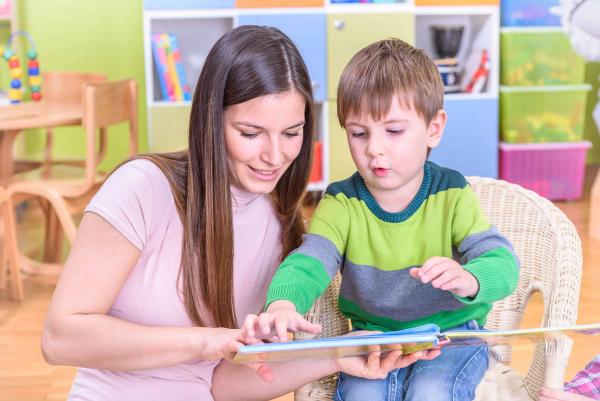
“Goodnight room. Goodnight moon. Goodnight cow jumping over the moon. Goodnight light, And the red balloon.” Does this bring back sweet memories of childhood bedtime?
Goodnight Moon; Go, Dog! Go; Caps for Sale; Stone Soup; The Giving Tree; Cloudy with a Chance of Meatballs; The Very Hungry Caterpillar.
Maybe just naming some of these classic children’s books bought you a one-way ticket down memory lane and perhaps you are thinking about ways to pass those same warm memories on to your own children. There are good reasons to do so. Research tells us that children who participate in storybook reading will have improved language growth. In fact, about 6% of all growth in children’s spoken language skills can be explained by interactive reading.
As children develop their abilities to communicate, they advance generally through identifiable stages. Crying, “happy noises,” babbling and laughing, starting to combine familiar sounds, and learning first words are all signs that your child is starting to communicate. All children can benefit from some level of interaction with books while they develop these communication skills. Though they will later expand their vocabulary and grow in their abilities to speak, read, write, and listen, understanding your child’s current developmental stage can help you to read more effectively and intentionally with them.
The following guiding principles of what and how to read can strengthen your family culture and lead to fond memories and improved language skills.
What Should I Read?
Good children’s literature is plentiful and available in local libraries as well as possibly your home library. Dr. Lisa Scott, a University of Florida researcher noted that “not all books are created equal” when compared across ages. The books you read to your children as infants should be adjusted for complexity and allow for greater interactivity as they grow older. Here are a few things to consider as you decide what to read.
- Consider books with few words and vibrant pictures for infants and toddlers. The goal here is to simply help them become comfortable interacting with books while spending treasured time with you.
- Use wordless books to promote creativity in older children and make use of the follow-along suggestions in books that can include clapping, touching toes, or lifting flaps to capture the attention of a younger child.
- When reading picture books, make use of “wh-” questions which will invite your child’s active participation.
- Pay attention to the reaction of your children with different books. Be patient as you explore books with them and find out what works well for each child. Active looking, laughing, and making noises are telling signs that you’ve found a book your infant or toddler likes. With preschoolers, note how well they stay engaged.
How Should I Read?
Recognize that young children are working on all kinds of cognitive skills, such as noticing patterns, labeling images, asking questions, and learning about print. Keeping this in mind can help you be more purposeful and intentional in the way you read.
- Invite “joint attention” on objects and elements in the story. Essentially, this means helping your child see what you see, as you point out various aspects of the story or the pictures that draw your attention. This type of joint attention can account for 5% or more of the vocabulary your child develops.
- Actively talk beyond the story that you read. Since children learn to understand before they can speak, narrate what you see, point out colors and names of objects, and talk about the emotions of the characters. As you do so, your reading sessions can better promote language development. Even if their answers to your questions are simple noises your invitation for the child to participate actively in the reading process can result in significantly higher language gains.
- Bring to life what you read in simple ways that help them connect what they are reading to real life examples in their world. For example, point out the cow out your car window or stop to see a horse, so that your child will have a real object in mind when they read about them again in a book. A father and researcher spent three years tracking the birth of one of his son’s first words, “water.” In his TED talk, he explains that the times that his son used “water” most was when he was in the kitchen around actual water. Children do not learn to talk by only sitting on the couch reading. They need context to learn more deeply and meaningfully about their world.
As you read with greater purpose and intention, you can encourage healthy and enduring language development in your children. Be sure to include your childhood favorites and create routines around books, so that this comforting and valuable tradition lives on as you put your child to bed, maybe even tonight. “Goodnight stars. Goodnight air. Goodnight noises everywhere.”

